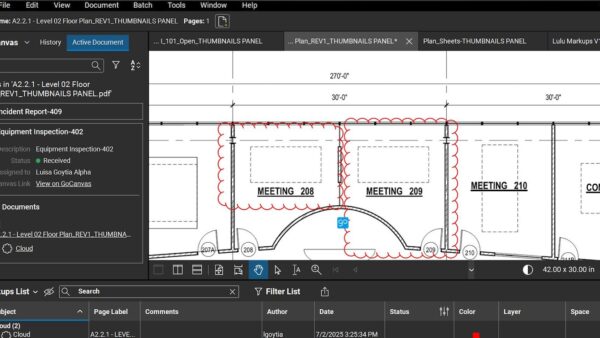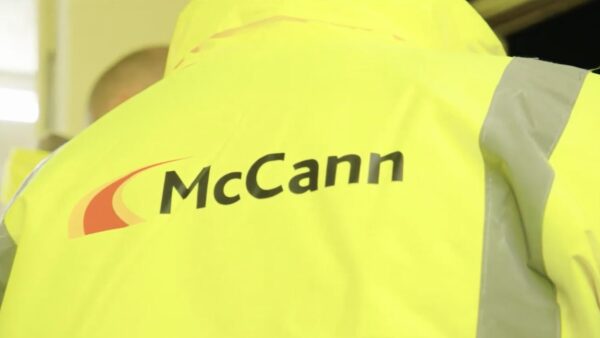
Confusion about the Building Safety Act and the golden thread continues. How are the management team and membership of BIM4Housing addressing this?
When long-time digital construction pioneer George Stevenson became BIM4Housing’s chairman in 2020, he was determined that it should be more than a talking shop. Four years on, it has become one of the most active BIM forums in the industry, producing granular guidance relating to building safety, including a golden thread taskforce, and a spin-off forum – BIM in Asset Management.
BIM4Housing comprises several working groups and work streams, which meet six to eight times a month. The new golden thread taskforce is an ambitious cross-industry initiative to tackle the inconsistent delivery and management of vital building safety information. Chaired by Stevenson, supported by BIM4Housing vice-chair Richard Freer, the taskforce is a response to growing alarm over the lack of awareness and compliance surrounding fire safety asset data, particularly for higher-risk buildings (HRBs).
The taskforce cuts across traditional silos of professions and work packages and draws on expertise from the cross-industry community within BIM4Housing and sister network BIM in Asset Management (formed about 12 months ago to cover other types of buildings).

“The golden thread taskforce will coordinate an industry-wide response to ‘what does good look like’ – not prescriptive, but a guide.”
Stevenson says: “We have formed the golden thread taskforce to coordinate an industry-wide response to ‘what does good look like’ – not prescriptive, but a guide contractors can use to inform their supply chains and owners/landlords can use to check that they have the information they really need.”
The ultimate objective is to ensure that, of the information created and managed, as much as possible is in a digital/machine-readable form, thus reducing the labour required and risks from manual checking, he explains.
Freer adds: “We’re not a talking shop. We’re about outputs – standardised, usable, repeatable outputs. And when we spot issues, we act.”
The move comes as a recent BIM in Asset Management survey (conducted at its May meeting) revealed widespread concern that building safety information – mandated by Regulation 38 and central to the golden thread concept – is still being overlooked or misunderstood.
A stark reality check
The survey results were sobering:
- 89% said their senior leadership were not fully aware of their legal responsibilities under the Building Safety Act.
- 92% did not believe the projects they were working on would deliver the fire safety asset information required by law.
- 43% said their organisations were not regularly checking and updating building information once delivered.
- 72% said O&M files were not being updated post-handover, despite this being critical to ongoing building safety and performance.
“These figures are shocking,“ Stevenson says. “But honestly, if you asked most people in the sector, they wouldn’t be surprised.”
Why a taskforce and why now?
While BIM4Housing has always sought to raise standards in information management, Stevenson says the current climate – with Building Safety Act requirements now legally binding – is a “tipping point”.
“The information required to ensure fire safety is clearly defined in Regulation 38. Yet 92% of our survey respondents believe their projects are falling short. That’s why we had to act,” says Stevenson.

“We’re not a talking shop. We’re about outputs – standardised, usable, repeatable outputs. And when we spot issues, we act.”
The golden thread taskforce brings together around 100 professionals – designers, contractors, product experts, fire engineers and asset managers – all committed to creating and promoting standardised information requirements that align with regulatory demands. The focus, at least initially, is on fire safety.
“We’re starting with fire-critical assets because that’s where the spotlight is. But the ultimate aim is to provide a comprehensive framework of best practice across all regulated systems,” Stevenson explains.
How the taskforce works
At its heart, the taskforce is collaborative. It draws on BIM4Housing’s working group model, which splits complex topics into short-term, ‘task-and-finish’ workstreams.
“We run six-to-eight meetings a month,” says Freer about BIM4Housing generally. “It’s intense, but it’s how we get results. People show up because they know it matters.”
The process begins by identifying a system – for example sprinklers, smoke control, or fire dampers – and then performing a deep dive into the risks that component mitigates, the information needed to ensure its safe installation and operation, and how that information should be managed and maintained.
“For fire doors, for example, we pulled together more than 100 specialists to define what makes up a fire door, what risks it mitigates, and what data is essential at each stage,” Stevenson says.
That methodology is being replicated across other systems, such as smoke dampers and detection systems. The guidance is not theoretical: it’s practical, built around real-world use cases and shared industry challenges.
“We’re trying to make it repeatable,” says Freer. “So that the fire door installer and the CEO of the building owner can sit side by side – figuratively, but also literally – and understand the same requirements.”
“Most information management in BIM focuses on design. Construction gets some attention, but asset management – where lives are literally at stake – is the weakest link.”
From project to legacy
The golden thread taskforce is the latest in Stevenson’s decades-long mission to standardise and digitise asset information. It began in the 1990s with the Design and Build Foundation, an early precursor to Constructing Excellence. He’s contributed to the Construction Products Association’s Lexicon project (aimed at standardising the way products are described digitally), the HACT Asset Information database, and Innovate UK-backed work on modular construction. He runs his own consultancy called ActivePlan. Freer is the founder of The IceFire Portfolio, which helps new businesses and talented individuals in developing countries.
Stevenson says that technical information and systems for standardisation are often met with resistance because of vested interests. “That’s why we’re doing this independently,” he says of BIM4Housing’s work.
BIM4Housing’s approach also reflects his frustration with fragmented digital efforts. “Most information management in BIM focuses on design,” he says. “Construction gets some attention, but asset management – where lives are literally at stake – is the weakest link.”
To address that, Stevenson established the dedicated forum: BIM in Asset Management. And the community has grown fast.
“Two and a half years ago, we had 1,500 people. Now it’s more than 7,000,” Freer says. “We’ve probably got 3,500 active members regularly feeding into our work across the two communities BIM4Housing and BIM in Asset Management.”
Raising awareness daily
One of the group’s more innovative ideas is a daily golden thread toolbox talk – a 30-minute virtual drop-in where members can ask questions, share problems or seek advice from experts.
“It’s like a coffee break, but focused,” Freer explains. “If someone’s stuck on something – say, what data they need for smoke control – there’s a good chance someone in the group can help.”
The idea is simple, says Stevenson, but critical. “This is where culture shifts. Not through big events, but small, consistent conversations that change how people think and work.”
The road ahead: from confusion to consistency
“Our job is to create something scalable. And to do that, everyone, from the installer to the CEO, needs to be on the same page.”
While the golden thread has been a core principle of the new building safety regime since Dame Judith Hackitt’s post-Grenfell review, implementation has lagged. Stevenson believes much of that stems from a lack of clarity.
“The regulator can’t prescribe exactly what every client must do, but we as an industry group can define what best practice looks like,” he argues.
That’s why the taskforce’s next step is the publication of standardised sets of information requirements for fire-critical elements – requirements that clients can issue to their supply chain, replacing today’s often bespoke, inconsistent and confusing documentation.
“If we can standardise what’s needed, it becomes easier for SMEs in the supply chain to comply,” Stevenson says. “Right now, they’re being asked to hit a moving target. That’s not fair or sustainable.”
Culture change from the top down
The survey findings also reveal a bigger challenge: awareness among leadership. “If 89% of people think their senior leadership don’t understand their legal responsibilities, that’s a massive governance failure,” Stevenson says. “We’ve got to educate the purse-string holders.”
That, too, is in the taskforce’s sights. With transcribed meetings, shared templates and a focus on accessible language, the group hopes to make its guidance usable, not just for technical experts, but for asset owners, housing associations and executive teams.
“Our job is to create something scalable,” says Freer. “And to do that, everyone, from the installer to the CEO, needs to be on the same page.”
So what is Stevenson most proud of? “Our work on golden thread information,” he says without hesitation. “I believe we’ve influenced government thinking. But more importantly, we’re providing tools the industry can actually use.”
In a sector still grappling with the implications of the Building Safety Act, that’s no small achievement. And as Stevenson and Freer point out, the work is far from done – “In fact, we’re just getting started.”
Comments
Comments are closed.
















Congratulations! You have achieved the difficult goal of letting the Construction industry realise that there is a Golden Thread of information which must remain digital and machine readable. BIM is the process which retains critical construction digitally. It was hard to convince construction professionals that Building Safety information must remain digital and from a single source of truth. The wise will surely follow you too.